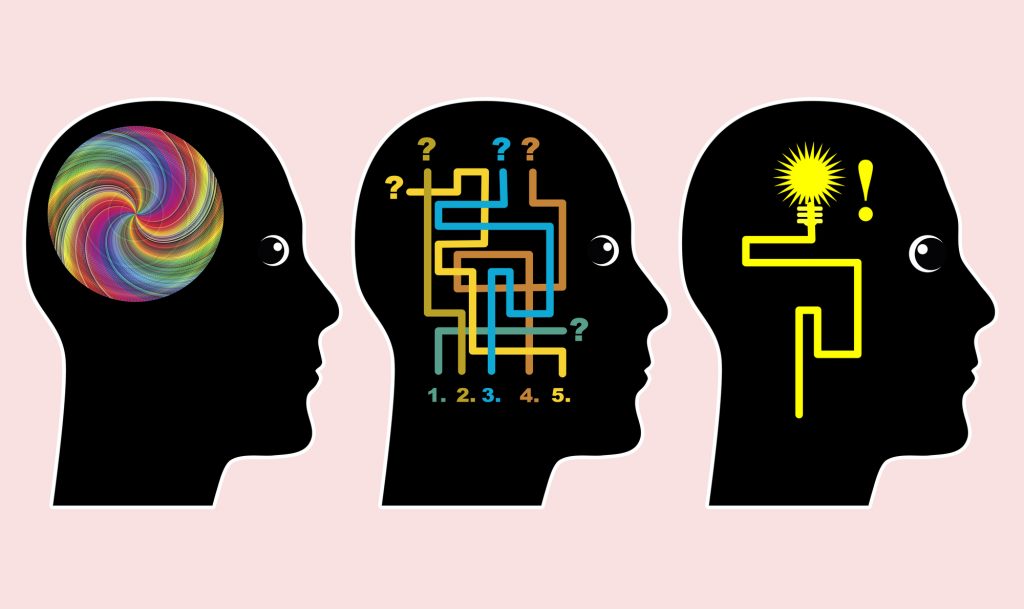
Teachers all have different styles of teaching, just as students all have different styles of learning. As a student, while you don’t have control over how the content is provided to you, you do have control over how you learn it. Learning is active! That means that while you might have the content laid out in front of you or presented in a video, you have to do what it takes to actually learn the material.
VARK is a simple acronym for the four main means for you to learn any subject area:
- • Visual
- • Auditory
- • Reading & Writing
- • Kinesthetic
Because most students are a combination of two or more learning types, it’s important to keep yourself engaged in your courses by varying how you take notes, review course materials, and study for exams. You can find out what your main learning styles are by honestly answering the questions of The VARK Questionnaire.
Once you know what learning styles are your strongest, here are some tips about how to learn according to your strongest learning styles. Remember, these learning styles have nothing to do with how your teacher teaches or how your course content is provided to you. This is all about what you can do to be a more effective learner.
Visual Learners
When you’re a visual learner, you learn best from images that you can manipulate. It doesn’t include photos, videos, or power points. Instead, a visual learner gets the most out of information when they use maps, diagrams, charts, or symbols to learn the information. This means that as a student, you would do well to create t-charts, drawings, Venn diagrams, or symbols for the content you’re trying to learn. If you have a small white board, that will help you study because you can easily draw visual representations of what you’re studying.
For example, if you’re learning new vocabulary, drawing images of what the words represent to you would be a great strategy for you to use. Another helpful way that visual learners can adapt their notes to their learning style is by using many different highlighters, colored pens/pencils, or sticky notes in order to visually code the information they’re studying. Whatever you do to engage your visual senses should include more than words, as that applies mostly to individuals with reading and writing learning styles.
Auditory Learners
This style of learning includes both listening and speaking. The trick with this learning style is that anything that mimics regular speech counts as a good way for auditory learners to retain information. In other words, if you take your textbook content or a teacher’s lecture and write it in everyday, ordinary speech that you would use, then it’s going to work best as a way for you to understand.
This means that if you’re reviewing your notes, another great idea is to record yourself reading them and then listen to them in your own way of speaking and in your own voice. A lot of times, students who are auditory learners perform better when they explain what they’re learning out loud to either themselves or someone else. A good way to practice this is to go ahead and answer when your family or friends ask, “What are you learning in school right now?” Putting new content into your own words is a really effective method of learning.
Reading & Writing Learners
This type of learning preference means pretty much what it sounds like. Your brain works best when information is displayed in writing. PowerPoints, online textbooks, dictionaries, manuals, and reports click really well for you. You retain information better when you Google some information and read about it as opposed to watching a video.
As a result, writing out or typing your notes is really important. And when you want to study, making flashcards or even re-writing or summarizing your notes is an important review tool to keep in mind. It’s all about the words, words, words, displayed in as many ways as you can think of for reading and writing learners.
Kinesthetic Learners
Learning hands-on or applying what you’ve learned to your own personal experiences is what kinesthetic learners prefer. Watching a simulation of what a lesson is discussing, watching a video that shows you how something works, or figuring out a way to connect a lesson to themselves personally is how these learners retain information best.
If you’re a visual learner, you will want to keep an eye on YouTube when you need a little more information in order to understand new topics. You also do best to go ahead and try things yourself, so if a teacher is lecturing about how to write a specific type of essay, your best bet is to go ahead and play around with the tips and tricks given to you so that you connect with the concepts more clearly. You prefer concrete ideas more than philosophy or concepts. Because of this, you’ll want to do your best to see different ideas in action either through personal experience or watching others in person or online.
The Mix
Most people are a mix of learning styles, so while you can prefer one type of learning for English class, you might prefer another for math. What’s for sure is that you need to be flexible enough to experiment with the different learning modes to see what works best for you as an individual. No one can tell you how you learn best. Only you can figure out exactly what helps you learn and make sure you’re actively engaging in those activities best suited for you. You will be pleasantly surprised at how much your learning improves once you narrow down your style and start experimenting with some of these tips!






